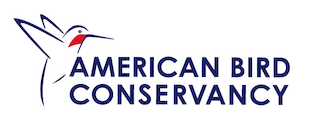New Britain Thrush Zoothera talaseae Scientific name definitions
- LC Least Concern
- Names (21)
- Monotypic
Text last updated June 19, 2018
Sign in to see your badges
Species names in all available languages
| Language | Common name |
|---|---|
| Bulgarian | Новобритански дрозд |
| Catalan | griva de Nova Bretanya |
| Croatian | bizmarkski drozd |
| Dutch | Bismarckgoudlijster |
| English | New Britain Thrush |
| English (United States) | New Britain Thrush |
| Estonian | melaneesia kirjurästas |
| French | Grive de Nouvelle-Bretagne |
| French (Canada) | Grive de Nouvelle-Bretagne |
| German | Bismarckerddrossel |
| Japanese | ニューブリテンジツグミ |
| Norwegian | tåketrost |
| Polish | drozdoń melanezyjski |
| Russian | Новобританский дрозд |
| Serbian | Drozd sa ostrva Nova Britanija |
| Slovak | drozd melanézsky |
| Spanish | Zorzal de Nueva Bretaña |
| Spanish (Spain) | Zorzal de Nueva Bretaña |
| Swedish | svartryggig trast |
| Turkish | Yeni Britanya Ardıcı |
| Ukrainian | Квічаль новобританський |
Zoothera talaseae (Rothschild & Hartert, 1926)
Definitions
- ZOOTHERA
- talaseae
The Key to Scientific Names
Legend Overview
Field Identification
23 cm. Adult has dark grey upperparts with black fringes, white spots on face, white eyering; large white tips of wing-coverts forming two broad wingbars, white tips of rectrices; white below, with black scaling on sides and flanks; iris dark; bill black; legs pinkish horn. Sexes similar. Juvenile undescribed.
Systematics History
Often considered to embrace Makira Thrush (Zoothera margaretae) and Guadalcanal Thrush (Zoothera turipavae), but differs from both significantly in plumage. Until recently considered conspecific with Bougainville Thrush (Zoothera atrigena) (which see). Monotypic.
Subspecies
Distribution
New Britain and Umboi I, in Bismarck Archipelago.
Habitat
Montane mist-forest; recorded at 580–1540 m on New Britain and 1300 m on Umboi.
Movement
Diet and Foraging
Sounds and Vocal Behavior
Breeding
Conservation Status
Not globally threatened (Least Concern). Restricted-range species: present in New Britain and New Ireland EBA. Very secretive and little recorded; may prove to be genuinely rare, and evidence suggests that its total population may be small. The most recent, very tentative, estimate puts the number of mature individuals at c. 1500–7000. Known from four sites on New Britain itself. Only one record from Umboi I (Mt Birik). Although montane forest in its range appears secure, this species may be susceptible to introduced mammalian predators, particularly owing to its terrestrial habits; the potential threat of introduced predators, however, may be minimal, as this thrush’s congeners on Makira (San Cristobal), in S Solomon Is, have been seen to persist alongside a large feral cat population.

- Year-round
- Migration
- Breeding
- Non-Breeding







































